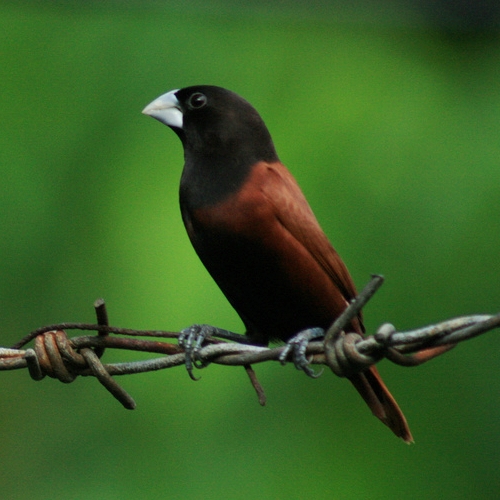Dr Abe V Rotor



Equisetum is a "living fossil" as it is the only living genus in Equisetaceae, a family of vascular plants that reproduce by spores rather than seeds, and the only living member of the entire class Equisetopsida. It is also called horsetail, snake grass, puzzle grass, scouring-rush, candock, and other local names.
What makes a living fossil is a puzzle. But extreme adaptability is the general concept of survival through time and space. For the natural gene to be preserved is not only a matter of strict isolation from other genes. In fact the mechanism of gene exchange is the key, only that it is narrowed down - in the case of the horsetails - within the only surviving genus, belonging to a single family, and a single class. The proliferation of horsetails did not go stray and lose their genetic identity as to have evolved into indistinguishable species even if there are sub-genera, sub-family and hybrids.
All horsetails today are distinctly and unmistakably the same morphologically and genetically. (A superficially similar but entirely unrelated flowering plant genus, mare's tail (Hippuris), is occasionally misidentified as "horsetail", and adding to confusion, the name mare's tail is sometimes applied to Equisetum.)
All horsetails today are distinctly and unmistakably the same morphologically and genetically. (A superficially similar but entirely unrelated flowering plant genus, mare's tail (Hippuris), is occasionally misidentified as "horsetail", and adding to confusion, the name mare's tail is sometimes applied to Equisetum.)
While horsetails grow in swampy places and considered wild, horticulturists have learned to plant them as ornamental purposes, admiring their unique characteristics displaying variations according to sub-types and hybrids. In Japan and Germany, the stems are bundled and used for scouring utensils and metals. They are used in the final process in woodwork to produce a smoother finish than any sandpaper.
Horsetails are a nuisance weed, unaffected by many herbicides designed to kill seed plants. They have the ability to regrow from the rhizome after being pulled out. And because they prefer acidic soil, lime may be used to assist in eradication efforts. They have been declared noxious weeds in Australia, New Zealand, Oregon in the US, and other countries, although they are considered useful as food plant largely as alternative source, and likely influenced by ethnic background.
Here is a report on horsetail as food. "The young plants are eaten cooked or raw. The fertile stems bearing strobili (spore casing) of some species are cooked and eaten like asparagus (a dish called tsukushi) in Japan. The people of ancient Rome would eat meadow horsetail in a similar manner, and they also used it to make tea as well as a thickening powder. Native Americans in the Pacific Northwest eat the young shoots of this plant raw. The plants are used as a dye and give a soft green colour. An extract is often used to provide silica for supplementation. Horsetail was often used by Indians to polish wooden tools. Equisetum species are often used to analyze gold concentrations in an area due to their ability to take up the metal when it is in a solution." (Wikipedia, citations and more data needed)
For its medicinal uses the same source reports.
"Extracts and other preparations of E. arvense have served as herbal remedies, with records dating to ancient Greek and Roman medical sources; its reported uses include treatments to stop bleeding, treat tuberculosis, to heal wounds and ulcerations, and to treat kidney ailments. In modern times, it is typically used as an infusion. Reliable modern alternative medicine sources include cautions with regard to its use. In 2009 the European Food Safety Authority issued a report assessing some specific health claims for E. arvense—e.g., for invigoration, weight control, and skin, hair, and bone health—concluding that none could be substantiated.
There is insufficient evidence to draw conclusions regarding its effectiveness as a medicine for all human conditions described. Even so, E. giganteum preparations are widely used in South America as an orally administered diuretic to reduce swelling caused by excess fluid retention and for urinary infections, bladder and kidney disorders. Horsetail preparations contain silicon, so they are sometimes suggested as a treatment for osteoporosis (brittle bone disorders)
Some Equisetum preparations are reported to have a high content of thiaminase, which may induce edema and cause lack of motor control (e.g., limb coordination), putting a person at risk of injury from falling; bradycardia (slowed heart-rate) and cardiac dysrhythmia are further negative side effects. Since horsetail contains nicotine, it is not recommended for young children." (Wikipedia, with citations and more data needed.)
---------------------------------------
Caution: If eaten over a long enough period of time, some species of horsetail can be poisonous to grazing animals, including horses. The toxicity appears to be due to thiaminase enzymes, which can cause thiamine (vitamin B1) deficiency.
-------------------------------------



.jpg&container=blogger&gadget=a&rewriteMime=image%2F*)











































